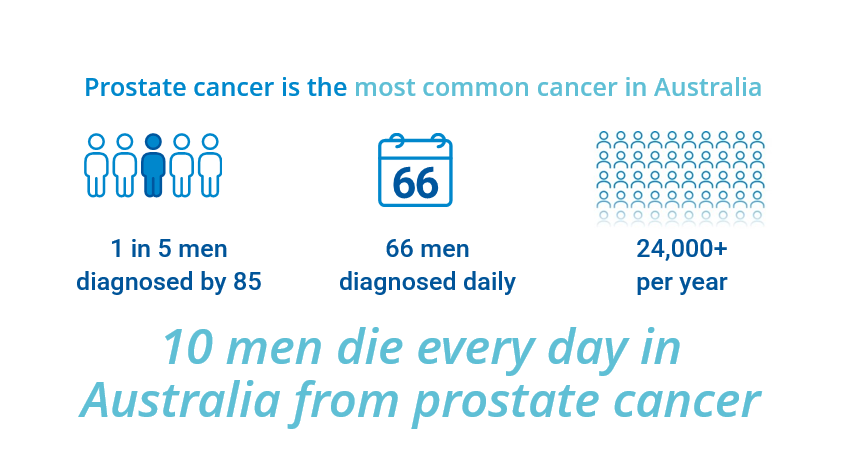

Data just released by the Australian Institute of Health and Welfare estimates 25,487 Australian men will be diagnosed with prostate cancer this year, an increase of around five per cent in just 12 months.
In the same period, the number of deaths has jumped from 3,507 to 3,743 – more than 10 deaths a day.
With nearly 70 Australian men now diagnosed a day, the peak body for prostate cancer says more needs to be done to improve early detection.
Prostate Cancer Foundation of Australia Chairman, Adjunct A/Professor Steve Callister, said the need for a public awareness campaign was high.
“Only around 36 per cent of prostate cancers in Australia are detected at Stage 1, when the disease can be more effectively treated.
“Early detection is key to survival, but to achieve higher rates of earlier detection we must have government and community support for awareness activity to improve understanding of the disease.
“With more than 10 Australian men dying every day from prostate cancer, we must do everything in our power to prevent late diagnosis and the tragic loss of so many of our fathers and sons.”
PCFA Chief of Mission and Head of Research, Professor Jeff Dunn AO, said greater awareness would be key to reducing deaths from the disease.
“PCFA surveys have found that 75 per cent of Australians do not know the PSA test guidelines, an alarmingly high level of unawareness that impedes early detection and diminishes population- wide survival prospects.
“If we can diagnose all men at the earliest stage and ensure they have access to new medicines and care, we can beat this disease. For men with a family history of disease, we need to give much clearer guidance about their risks and screening options.
“Five-year survival is now at an all-time high, but this survival benefit is not enjoyed equally by all men, with disparities in regional areas and among those experiencing socio-economic disadvantage,” he said.
Chief Executive Officer, Anne Savage, said the number of men being diagnosed would continue to skyrocket with Australia’s ageing and increasing population.
“The number of men being diagnosed is increasing at an accelerating rate, which means we need to step up and make new medicines and treatments available more rapidly.
“We cannot afford to ignore the impact that prostate cancer has on individuals and families, knowing that prostate cancer accounts for more hospitalisations than any other type of cancer in the country.
“The toll it takes on men’s lives is high, accounting for more than $1.35 billion in health care costs every single year.”
According to the new data, more than 250,000 Australian men are alive today after a diagnosis of prostate cancer at some point in the past 37 years.
“Our population is ageing and increasing, which means more and more men are being diagnosed with prostate cancer every year,” Ms Savage said.
“Over 3,700 Australian men will die of prostate cancer this year. With concerted action, many of these deaths can be avoided.
“We hope to bring together government, health services, and patients to create a new way forward,” she said.
For more information, call 1800 22 00 99 or go to www.pcfa.org.au.